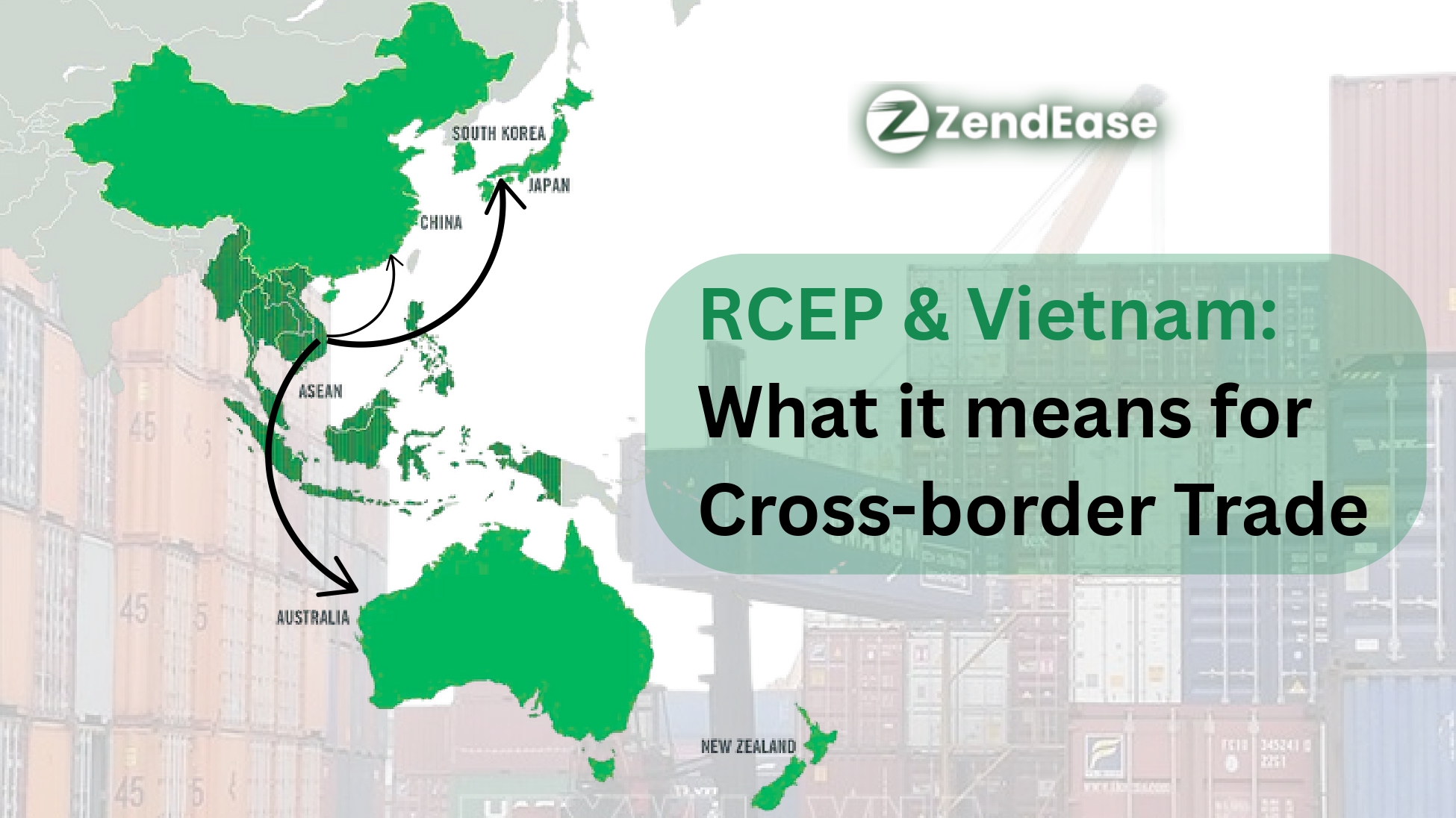Making Sense of RCEP: Vietnam’s Next Big Step in Trade
by Ly Nguyen on Jul 23, 2025

1. Vietnam & the World’s Largest Trade Pact
Signed in November 2020 and effective from January 1, 2022, the Regional Comprehensive Economic Partnership (RCEP) is now the largest free trade agreement in the world. It brings together 15 Asia-Pacific nations — including Vietnam, China, Japan, South Korea, Australia, and New Zealand — covering about 30% of global GDP (over USD 26 trillion) and nearly 2.3 billion people (ASEAN Secretariat, 2022).
For Vietnam, RCEP represents not just bigger markets but also deeper regional supply chain integration, positioning the country as an increasingly important hub for cross-border manufacturing and trade.
2. Why RCEP Matters for Vietnam’s Exporters
One of the core benefits of RCEP is tariff reduction. Over the next 20 years, member countries will gradually eliminate tariffs on about 90% of goods traded within the bloc (World Economic Forum, 2022). According to Vietnam’s Ministry of Industry and Trade (MOIT, 2022), this could boost the country’s total exports by 4–5% by 2030, contributing up to 0.5% additional GDP growth per year.
This is good news for Vietnam’s key export sectors, from textiles and agriculture to high-tech manufacturing. For example, Vietnam’s electronics exports alone reached USD 114 billion in 2023, accounting for about 30% of total export value (General Statistics Office of Vietnam, 2023).
3. Understanding the Rules of Origin
Lower tariffs under RCEP are not automatic — businesses must comply with the agreement’s rules of origin to qualify. Typically, at least 40% of the final product’s value must come from within the RCEP bloc.
Take Vietnam’s textile industry: if a garment producer sources fabric from China and threads from South Korea, assembles shirts in Vietnam, and exports to Japan, it must prove that at least 40% of the product’s value is generated within the region to benefit from reduced duties (ASEAN Briefing, 2022).
The same applies to electronics manufacturers who import components from RCEP countries, assemble them locally, and ship them regionally. Without complete certificates of origin, they risk losing tariff privileges, facing unexpected costs and clearance delays.
4. Opportunity Comes with Complexity
While RCEP’s benefits are clear, so are the compliance demands. Businesses must carefully track sourcing, maintain updated supplier documents, and present correct origin certificates at customs.
Consider fresh fruit — Vietnam is now one of Asia’s top exporters of dragon fruit, mango, and lychee to markets like Japan and South Korea (Vietnam Trade Promotion Agency, 2023). These exports benefit greatly from lower tariffs under RCEP, but they’re highly time-sensitive and perishable. One documentation mistake or customs delay can mean an entire shipment arrives overripe and unsellable.
5. ZendEase: Helping Businesses Make RCEP Work
At ZendEase, we understand that a trade deal only works when your shipment does. We help Vietnamese exporters design supply chains that meet RCEP’s origin rules, coordinate with suppliers across borders, prepare precise documents, and select the right shipping routes to keep goods moving efficiently and compliantly.
Whether you export electronics, textiles, or fresh produce, our goal is to help you navigate this powerful agreement — so you can deliver your products to Asia-Pacific markets faster, cheaper, and with confidence.
RCEP is Vietnam’s next big step in global trade — let ZendEase help you take it smoothly.
Contact us today to unlock RCEP’s full value for your business.
References
- ASEAN Secretariat, Regional Comprehensive Economic Partnership Agreement Overview (2022)
- World Economic Forum, RCEP Explained: The World’s Largest Trade Deal (2022)
- Ministry of Industry and Trade of Vietnam (MOIT), RCEP: Opportunities for Vietnam’s Exporters (2022)
- General Statistics Office of Vietnam (GSO), 2023 Vietnam Export Data
- ASEAN Briefing, Understanding RCEP Rules of Origin (2022)
- Vietnam Trade Promotion Agency (Vietrade), Vietnam’s Fruit Export Potential under RCEP (2023)